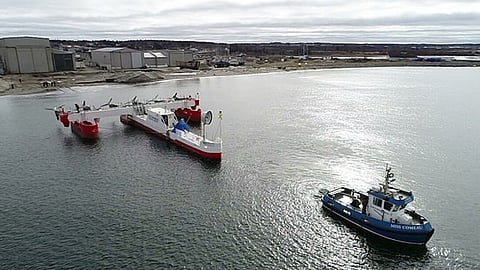

Edinburgh-based Sustainable Marine Energy, through subsidiary Sustainable Marine Energy Canada, has unveiled a new floating tidal energy platform as part of a larger project aimed at developing the world's first floating tidal energy array.
The platform was built by A.F. Theriault and Son and launched in the Bay of Fundy between Nova Scotia and New Brunswick, an area that experiences the highest tides on earth.
It will undergo commissioning and testing in Grand Passage and will then be moved to the Fundy Ocean Research Centre for Energy (FORCE) site as part of the first phase of the Pempa'q In-stream Tidal Energy Project. The Pempa'q Project takes its name from the Mi'kmaq First Nation word "Pempa'q" meaning "rise of the tide", in honour of the Bay of Fundy's indigenous communities.
The total in-stream tidal energy project will deliver up to nine megawatts of electricity to the Nova Scotia grid. This will reduce greenhouse gas emissions by 17,000 tonnes of CO2 a year and power approximately 3,000 homes in Nova Scotia.
The Pempa'q Instream Tidal Energy project is being supported by the Government of Canada with CA$28.5 million (US$22.4 million) in funding, making it one of Canada's largest ever investments in tidal energy.
The recently launched platform was designed specifically for the FORCE site and produces 50 per cent more power than its predecessor, which has undergone rigorous testing since 2017, firstly in Scotland before relocation to Grand Passage, Nova Scotia, in 2018.
During testing the system has successfully produced power and has demonstrated it can operate in adverse weather conditions. It is also measuring crucial environmental effects and has not recorded any evidence of adverse impacts on fish or marine animals.
The tidal platform only requires two metres of water for launching and towing and is moored with a turret configuration allowing it to align with the tide or the river flow. It has been designed to be easy to install and is accessible for maintenance and servicing, addressing one of the key challenges experienced by earlier tidal energy developers.
This new technology was originally developed in Scotland with support from Scottish Enterprise's WATERS funding, before arriving in Nova Scotia.
